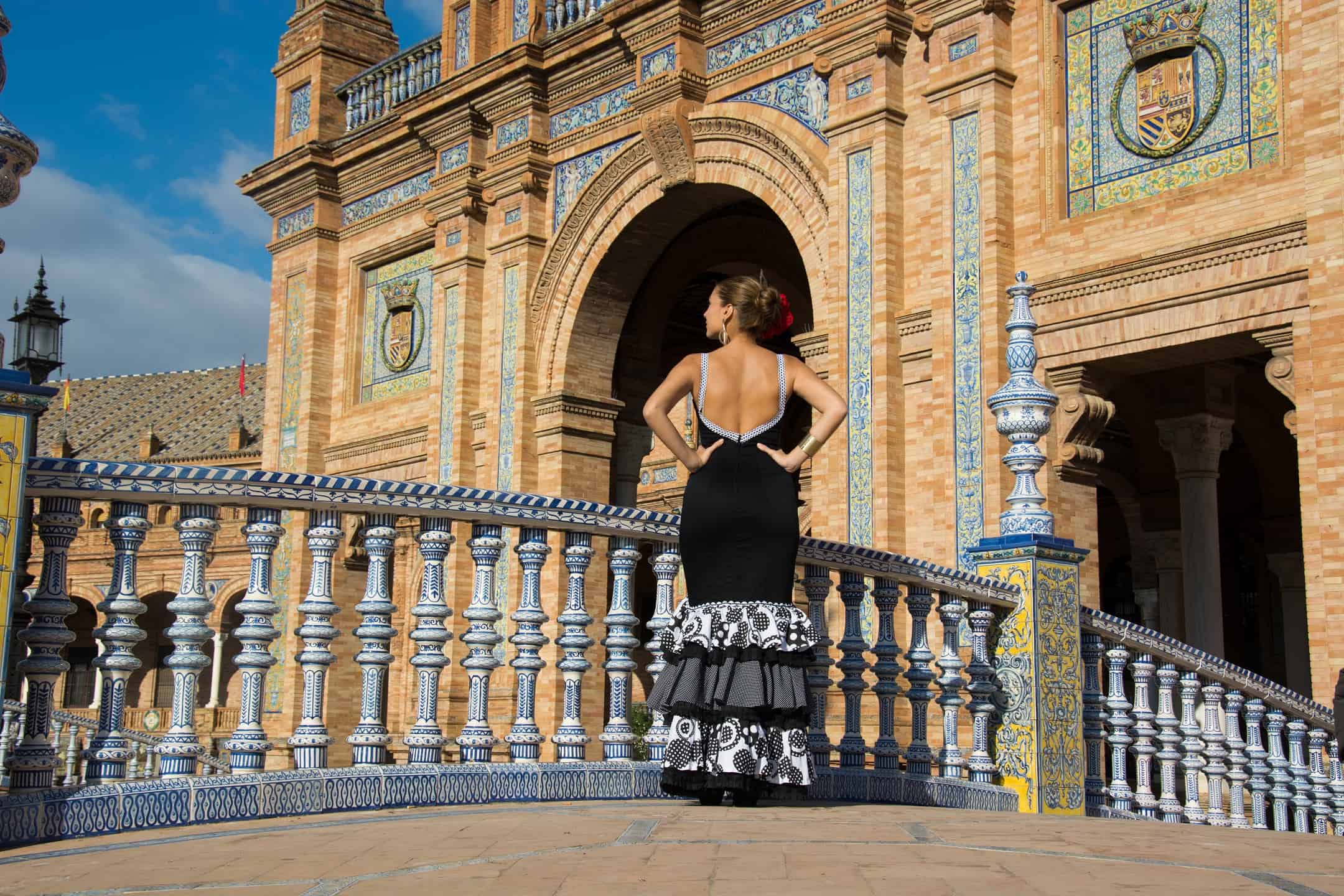Flamenco is a form of Spanish folk music and dance that was born and popularized in the Andalusia region of southern Spain. It infused Spanish folklore with sounds from the Levant, North Africa and India into the wondrous sounds and movements seen today. It is so unique to Spanish culture that it was even listed by UNESCO as a tradition integral to their Intangible Cultural Heritage, which has fueled interest in the genre from foreign visitors. Those who are on the hunt for live Flamenco performances won't have to search for very long, especially in its home in southern Spain.
Madrid
When searching for Flamenco in Spain's capital city, there are only really three options. Several bars throughout the city may host Flamenco music, but the true live performances can be found at Cafe de Chinitas, El Corral de La Moreria or Torres Bermeja.
Cafe de Chinitas, located near the Plaza Santo Domingo is a dinner and drinks affair where visitors line the tables and watch some of the most extravagant Flamenco in the country. Although the extravagance is to draw in the tourists, the Flamenco is the real deal.
El Corral de La Moreria in the Las Brisas area is Madrid's oldest purveyor of live Flamenco performances, recently surpassing its 50th birthday. While El Corral de La Moreria may be old, it has earned a worldwide reputation for showcasing the best Flamenco artists in the world, a reputation that has been hard to rival outside of the folk dance's home region.
For those that want the less crowded of the Flamenco joints in Madrid, Torres Bermeja just off the Gran Via is off the main tourist stretch and often a more relaxing setting for those that don't like the crowds. The Flamenco is not as flashy, but rather keeps true to the strong tradition of this folk music and dance.
Barcelona
Flamenco isn't quite as popular in Spain's party capital of Barcelona, but a few establishments can be found that prioritize this unique tradition over the usual saturated nightclub scene that calls the city home.
At the southern end of Las Ramblas is Tablao Flamenco Cordobes, a Flamenco club that has been going strong since the 1970s. While upon first entering, it may seem like a lovely little bar, the real action is upstairs where their lively Flamenco presentations have garnered international prestige for their energy and authenticity.
Likewise, Tarantos at Plaza Reial 17 is one of the older Flamenco joints in Barcelona and has also garnered the reputation for presenting only the best performers at their club. For Tarantos, it is truly a quality over quantity affair, which presents some of the most memorable shows. However, visitors will want to check their schedule before showing up, they alternate Flamenco with evenings of Jazz and other music types.
Seville
For the most eclectic collection of Flamenco performance houses, it is best to head down south to the town of Seville. Although heavily debated, this is generally agreed upon to be the birthplace of this particular folk art. As such, it has more Flamenco than even the biggest fan could possibly pack into one vacation.
Casa de la Memoria in the Barrio de Santa Cruz area delivers Flamenco in its purest form. This isn't a Flamenco performance combined with a restaurant or bar atmosphere; in fact there is not a drop of food or drink present. Visitors are sat in front of the beautiful Andalucian style patio in its 18th century palace venue where the focus isn't split between a number of different things like food and drink service, but rather directed specifically on the noise and beauty that is the Flamenco performance.
In the Triana area of Seville, Casa Anselma takes a more unexpected approach to the art. At a glance, Casa Anselma seems like they average bar and restaurant combination found everywhere throughout the world, but this is actually a Flamenco place, you will just never see it coming. Their Flamenco acts are always spontaneously performed and - according to the owner - unrehearsed. They may be unrehearsed but they are always fantastic performances, mostly due to the high quality of performers attracted by the owner who used to be a Flamenco dancer herself.
On the opposite side of the spectrum from the highly popularized Casa de la Memoria and Casa Anselma is La Carboneria. This little Flamenco joint is hidden away on a narrow side street and marked only by its red door. It is definitely a place where those unfamiliar with the area will need to get directions to, but it offers that coveted locals-only bar feel with Flamenco shows that have no cover charge, no glitz, but plenty of glamour. La Carboneria offers simple Flamenco performances, food and drink all at an affordable price in a low key atmosphere for those that find the other performances in Seville far too costly.
Have you admired live Flamenco in Spain before?
Tell us about it - we want to know!
Leave a comment below or tweet us
Related content on Canadian Traveller


